Opposites: From the countryside to the capital. Battambang and Phnom Penh
منتشر شده: 16.02.2018

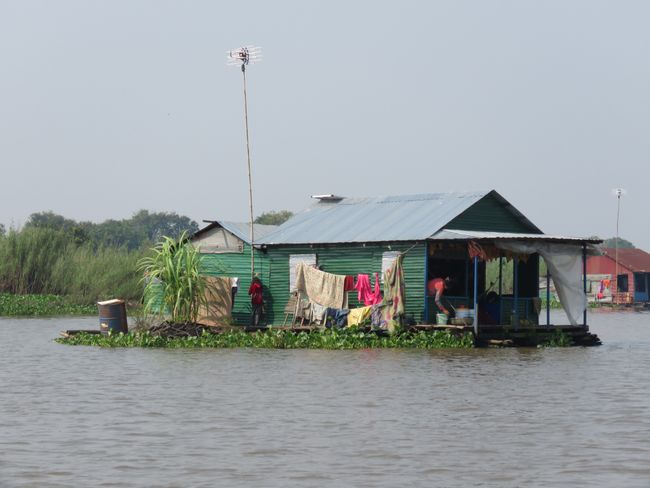




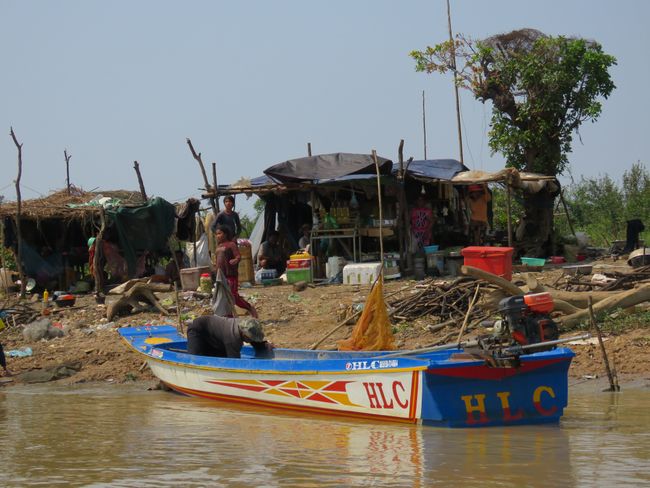






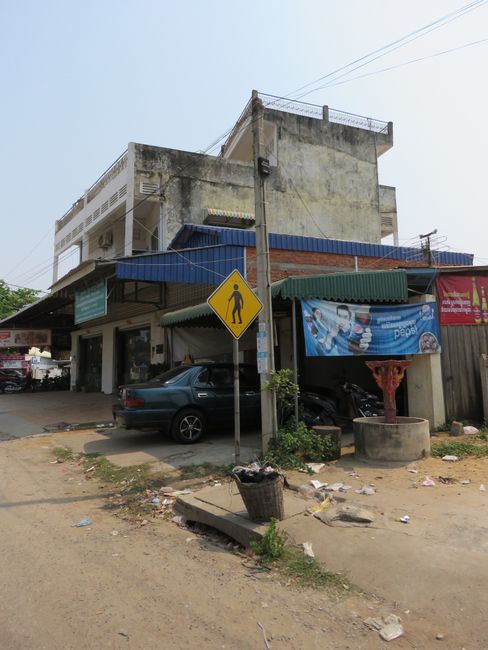














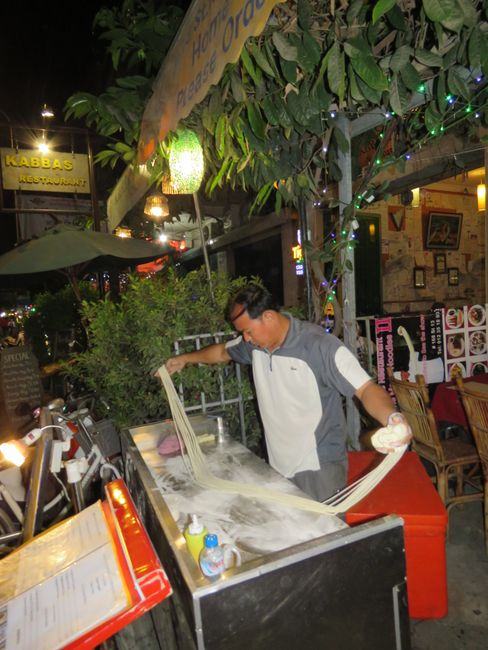
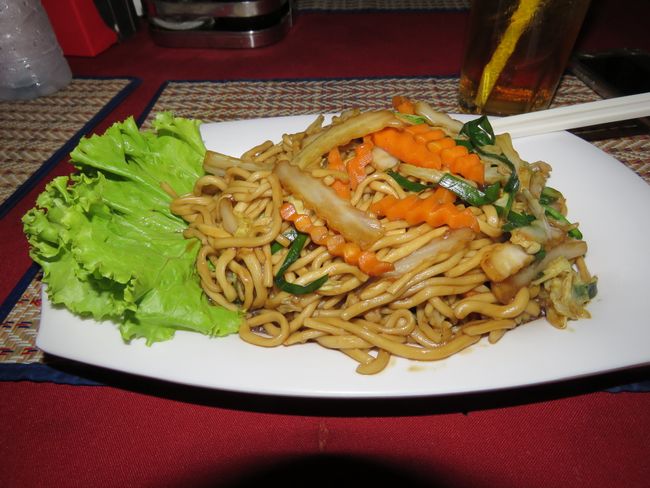
مشترک شدن در خبرنامه
After the usual delay of the pick-up at our hotel for the boat trip, we finally arrived at the pier. The boat was already quite full, but we managed to get a few seats in the aisle. The boat sailed through part of the Tonle Sap Lake and a narrow river to Battambang. On the way, we passed the floating villages where people have built their houses on floating rafts. Depending on the dry or rainy season, their houses move with the water. We could watch fishermen at work and observe people in their daily lives. The more rural it became, the poorer the population. Sometimes, the "houses" on the river bank were just plastic tarps and tents on stilts. The river is their livelihood. Here they washed themselves, brushed their teeth, and fished. This is what life must look like for the majority of Cambodia's population. Cambodia is one of the poorest countries in the world, which is hardly noticeable in the cities.
The boat trip to Battambang takes considerably longer than the bus, but it is worth it and saves you the tourist day trip to the floating villages, of which you see many along the way!
Arriving near Battambang, we asked the tuk-tuk driver if he could just drop us off at the hostel and then take us directly to the Bat Caves. We had to hurry because the trip took about half an hour, it was already 5 o'clock, and the "show" was supposed to start shortly before 6 o'clock. The Bat Caves are caves where millions of bats live. Every evening around 6 o'clock, they swarm out to the Tonle Sap Lake to hunt. A unique natural spectacle!!! We actually made it in time... It was truly incredible how many bats flew out of the cave entrance. The stream of bats did not stop for over half an hour. There are said to be between 6 and 10 million of them!
Originally, we wanted to take a tuk-tuk to a bamboo "train" the next day, which is available in Battambang, but the evening before we read that this bamboo train has not existed for 3 months and instead a tourist scam route has been built as a replacement. So we skipped that and went to the Killing Caves near the Bat Caves from the previous evening instead. Here, the Red Khmer's own countrymen were impressively tortured, killed, and then thrown down into the cave through a hole. A cruel place where you don't want to stay for very long!
A brief history lesson: From approximately 1975-1979, Pol Pot seized power overnight with his army known as the "Red Khmer" and relocated all city residents to the countryside. There, they had to work in forced labor camps without getting much to eat or drink. Pot was against all intellectuals, politicians, glasses wearers, and anything else that came to his mind. During his reign of terror, almost one-third of all Cambodians died due to adverse circumstances, torture, or direct killings.
Then we went further up the mountain to the temple. The view was nice, but it was also very hazy, as always in Cambodia (probably because the Cambodians always burn all their fields).
Since we skipped the bamboo train, we had time until Georgi was supposed to leave at 2 p.m. We used this time to visit the Human Arts Gallery. Here, a Spaniard exhibits his photographs, which he took on his bike trip from Europe through Africa and Asia without any money in his pocket. The pictures tell an incredible story, and the photographer added some explanations. You could have listened to him forever, but unfortunately, it was not that easy because of his relatively poor English. Still, an impressive personality and great photographs!
Then we unfortunately said goodbye to Georgi, who had been with us for almost 3 weeks. She is going back to Siem Reap to pick up a friend who is coming to visit.
Originally, we wanted to relax for the rest of the day... after all, we had a pool in the hostel that needed to be used. But Tina spontaneously read about a Khmer cooking class. So we tried to get a last-minute spot. When we arrived there on time, everyone was already at the market to buy fresh ingredients. After some back and forth, one of the staff members finally took us to the group, who told us that they had also just started 5 minutes ago. So we didn't miss much.
At the market, we saw how fresh coconut milk is made from grated coconut, many fresh herbs, spices, and roots, as well as various fish and vegetables. An indigenous person explained and showed us all of this. With the fresh ingredients, we went back to the kitchen. Two cooking teachers were already waiting for us, who gave us cooking hats and aprons. So we were prepared for anything in such sexy attire. First, the ingredients and recipes were discussed, and then the wild chopping began. In several stages, we cooked fish amok, spring rolls, beef lok lak, and a banana-coconut dessert.
When we were finally done, we could enjoy our menu together. We hadn't eaten so deliciously anywhere in Cambodia before!
We met Silvia and Irina in a sky bar for a last cocktail in Battambang.
The next day was once again characterized by a long bus ride. We were going to the capital of Cambodia, Phnom Penh. After arriving there, we walked through the city in the evening, past the Royal Palace, the Tonle Sap River promenade, many restaurants and hotels, as well as people living under plastic tarps on a small strip of green space. We got some food at the night market and dined on the ground, as is customary here. Unfortunately, Carsten sat in something wet by accident. So we quickly went back to the hotel.
After a good night's sleep, we were already approached by a tuk-tuk as soon as we left the hotel. We actually needed one for the day, and after a few negotiations and a quick hearty breakfast, we started. The destination: the "Killing Fields," a place with a dark history. Once again, it was a memorial of the Red Khmer era. At the entrance, you receive a very good German audio guide. So put on your headphones and immerse yourself in the terrible experiences of some survivors during that time. Over 10,000 Cambodians, including many children, babies, women, men, and even their own Red Khmer soldiers, were killed and buried in mass graves in these Killing Fields outside of Phnom Penh. A stupa with hundreds of skulls in the middle of the site commemorates the many dead. It is a really oppressive place.
Nevertheless, we continued to the associated torture prison in the middle of the city. Here, too, there is a good but very long audio guide. In this former school building, people were tortured through so many terrible methods that we do not want to go into detail here. Many people died here or were deported from here to the Killing Fields. After the Vietnamese defeated the Red Khmer, they found only about 10 survivors, most of them painters or musicians who entertained the leaders. What surprised us the most was that no one noticed this reign of terror. Nothing leaked out, and the leaders of the Red Khmer were even accepted internationally as "legitimate" rulers and invited to meetings with other heads of state worldwide. It's unimaginable! Only in the 1990s did the fighting actually stop.
After the impressions of the day had settled a bit, we watched the colorful hustle and bustle in Phnom Penh's huge market hall.
Later, we wanted to visit the temple that gave the city its name. It wasn't anything special, but it had a beautiful and well-kept exterior. We spent some time there before looking for a hairdresser for Carsten. We took the first one in a street full of hairdressers (which we only later found out) and Carsten sat down with a queasy feeling in the chair, hoping that his wishes would be understood. The hairdresser snipped and snipped... until there was nothing left on his head. In the end, it looked quite good, and for $3, you can't complain ;)
On the way back to the hotel, we passed a Khmer restaurant that made its own noodles by hand, without a noodle machine or anything similar, and you could even watch them. Delicious!
Then we had to apply for our e-visa for Vietnam online, which worked smoothly except for the correct address of our accommodation in Vietnam. We should have it in three days. >An easy and cost-effective alternative!< Now it just has to work at the border...
But first, we're heading to the islands in the south of Cambodia for relaxation and birthday celebration! :)
مشترک شدن در خبرنامه
پاسخ

گزارش سفر کامبوج

